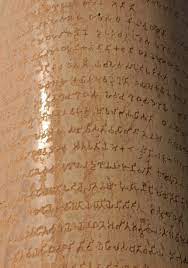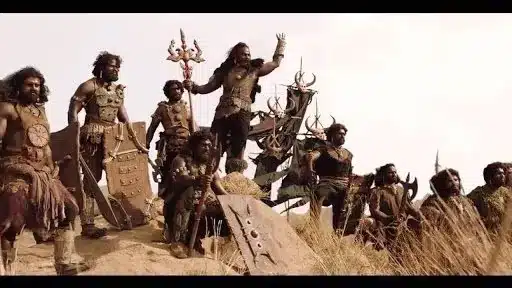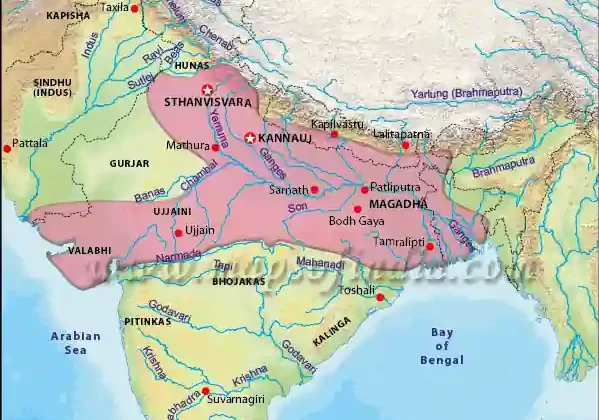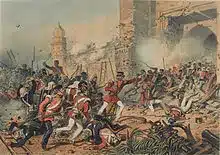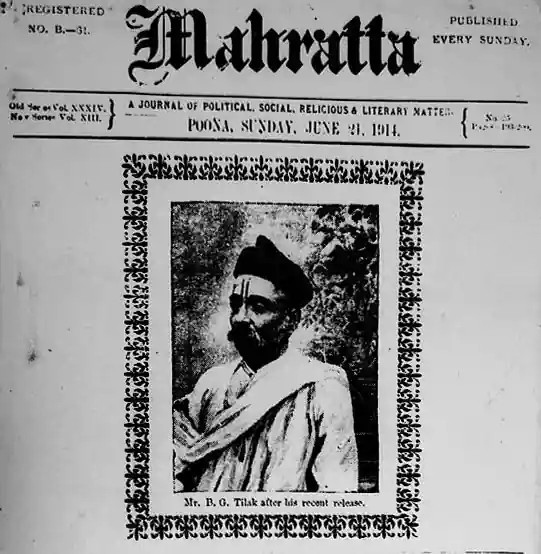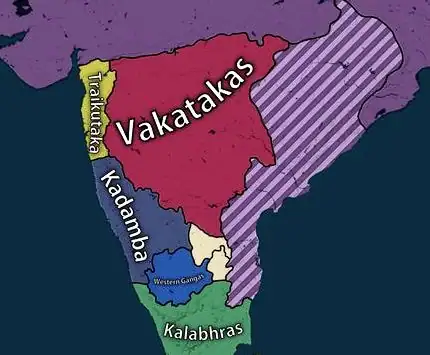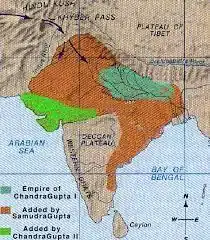Introduction of Vedic Literature
The glory of Aryans is in their literature. The Vedic texts were composed in Sanskrit and orally transmitted for many centuries before they were finally written down. During this transition from oral to written versions, the language also evolved from what was known as Vedic Sanskrit to Classical Sanskrit.
Shruti and Smriti (Vedic Literature)
- The Vedic literature is broadly divided into two categories viz. Shruti and Smriti. Shruti (that was heard) literature was initially transmitted orally before it was finally written down. It is considered authoritative, canonical, eternal / divine and unquestionable truth. Vedas, Brahmanas, Aranyakas and Upanishads together form the Shruti literature and make the central canon of Hinduism. These also make the four components of Vedic literature.
- Smriti is what is remembered, supplementary and may change over time. The entire body of Classical Sanskrit literature is Smriti including Vedangas, Shatdarshana, Puranas, Itihasas (epics), Upavedas, Trantras, Agamas and Upangas. They are authoritative to the extent that they conform to the bedrock of Shruti.
- However, there is not a distinct divide between Shruti and Smriti. Both can be represented as a continuum.
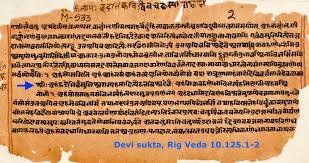
Shruti Literature (Vedic Literature)
Vedas (Vedic Literature)
The four Vedas viz. Rig-Veda, Yajurveda, Samveda and Atharvaveda come under the Shruti literature and are bedrocks of entire Vedic literature. The basic material or mantra text of each of the Vedas is called Samhita. Samhita is literally a compilation. Some post-Vedic texts are also known as Samhitas such as Ashtavakra Gita, Bhrigu Samhita, Brahma Samhita, Deva Samhita, Garga Samhita, Kashyap Samhita, Shiva Samhita and Yogayajnavalkya Samhita.
Rig Veda (Vedic Literature)
- Rig-Veda is oldest literature of the world and is known as “First testament” of mankind.
- The Rig Veda is a collection of 1,028 hymns, divided into 10 Mandals (books). They are the earliest compositions and hence, they depict the life of the Early Vedic people in India.
- Recently, the Rig Veda has been included by the UNESCO in the list of intangible culture of Human Heritage.
- Earliest Mandals, i.e., II to VII are called family books as they are ascribed to particular families of seers/rishis.
- The famous Gayatri Mantra comes from third Mandala of Rig-Veda.
- Mandal VIII – Mostly relate to Kanva’s family.
- Mandal IX – Compilation of Soma hymns.
- Mandal I and X – Are later additions and contains the Purusashukta which explains the four varnas.
- The first hymn (1.1) of Rig-Veda is dedicated to Vedic God Agni.
- One entire Mandala (ninth) is dedicated to the Vedic beverage Soma.
- The Nadistuti sukta is hymn dedicated to 10 rivers of contemporary India.
- The Nasadiya Sukta talks about the origin of the Universe and is part of 10th Mandala. This Sukta states a paradox “not the non-existent existed, nor did the existent exist then”.
- There are two branches of Rig-Veda viz. Shakala Shakha and Vatkal or Bhashkala Shakha.
- Two Brahmans of Rig-Veda are Aitreya and Kaushitaki.
- Upveda of the Rig Veda is the Ayurveda.
Sama Veda (Vedic Literature)
- Samaveda contains the rhythmic compilation of Hymns for Rig-Veda.
- It is a collection of 1,810 melodies, and also contains the famous Dhrupada raga, later sung by Tansen.
- Samaveda sung by a special class of Brahmins called Udgatris.
- The Samaveda consists of 1,549 unique verses, taken almost entirely from Rigveda, except for 75 verses.
- Gandharveveda is Upaveda of Samveda.
- Panchavisha, Shadvisha and Jaiminiya Brahmanas are attached to Samaveda.
- Recensions (Shakhas) of the Sama Veda are Kauthuma, Jaiminiya (Talavakara), and Ranayaniya.
Yajur Veda (Vedic Literature)
- The Yajur Veda deals with the procedure for the performance of sacrifices.
- It is ascribed to Advaryus who prepared the ground for Yajnas.
- It is the world’s oldest prose literature.
- The texts are further divided into Shukla Yajur Veda and Shyama Yajur Veda.
- Shyama is older than Shukla and has no separate Brahman.
- Shukla is newer and has three Brahmanas attached to it viz. Kathaka, Taittiriya and Shatapatha Brahmana.
- Krishna Yajur Veda/Black Yajur Veda (contains both mantras and prose explanations/ commentary). It contains the Kathaka, Maitrayani, Taittiriya, and Kapishthala recensions.
- The Upveda of the Yajur Veda is the Dhanur Veda.
Atharva Veda (Vedic Literature)
- The Atharva Veda is a collection of magic spells and charms to ward off the evil spirits and diseases.
- It is the last Veda and is considered a non-Aryan work divided into 20 kandas (books), with 711 hymns.
- It is ascribed to Atharvans and Angiras.
- Gopatha Brahman is linked to Atharvaveda.
- Atharvaveda has no Aranyakas appended to it.
- The Shaunaka and Paippalada are the recensions of the Atharva Veda.
- The Upveda of the Atharva Veda is the Shilpa Veda.
Brahmanas (Vedic Literature)
Brahmanas are prose texts explaining the meaning of hymns of Vedas, giving their applications and stories of their origin and composers.
- The Brahmanas describe the rules for the performance of sacrificial ceremonies.
- They, however, explain the hymns of the Vedas in an orthodox manner.
- Each Veda has several Brahmanas attached to it.
- The most important Brahmana is the Satpatha Brahmana, which is attached to the Yajur Veda and is the most exhaustive. It recommends ‘one hundred sacred paths’.
Aranyakas (Vedic Literature)
- Aranya means forest.
- Aranyakas are called the ‘forest books’ as they were written mainly by hermits living in the jungles for their pupils. They deal with mysticism and philosophy and oppose sacrifice.
- They are actually the concluding parts of Brahmans and their content focuses on philosophy and `mysticism rather than rites, rituals and sacrifices.
- Their stress is on moral values.
- They form a bridge between the Karma of Brahmans and the Gyana of Upanishads.
- There are no Aranyaka appended to Atharvaveda.
Upanishads (Vedic Literature)
- Upanishad means to sit down near someone. They denote students sitting near their Guru to learn. Thus, Upanishads are treatises of teachings of Gurus to their pupils.
- There are 108 Upanishads, of which 13 are the most prominent.
- They specify philosophical knowledge and spiritual learning. The main motto of the Upanishads is “Knowledge Awards Salvation”.
- The Upanishads dwell on the ‘Atman’ and ‘Brahman’, and focus a lot on the philosophy about life, the universe, self, body, sacrifice, etc.
- They emphasise that the knowledge of the self or atman should be acquired and that the relation of the atman with the Brahman should be properly understood.
- Upanishads are also called Vedanta because they reveal the final aim of Vedas.
- Oldest Upanishads are Brhadaranyaka and Chandogya.
- Mandukya is the shortest of all Upanishads.
- The Chhandogya Upanishad – Clearly refers to the first three ashrams and discusses the types of marriage (mainly two).
- Anuloma marriage – The marriage of a man in his own varna or below his varna. It is the most accepted and common form of marriage in the society.
- Pratiloma marriage – The marriage of a girl/woman in a varna lower than her own, deemed rare and not sanctioned by the Vedas.
- Kathopnishad deals with the dialogue between Nachiketa and Yama.
- “Satyamev Jayate” India’s motto comes from “Mundaka Upanishad”.
- Gargi was the daughter of Rishi Vachaknu and is mentioned in the Sixth and the Eighth Brahmana of Brhadaranyaka Upanishad.
- Muktika : This Upanishad deals with the Para Vidya and Apara Vidya. The Para Vidya is knowledge that leads to Self Realization, Apara Vidya deals with everything else or the material knowledge.
- Māandūkya : Mandukya is the Shortest Upanishad. It contains twelve verses expounding the mystic syllable Aum, the three psychological states of waking, dreaming and sleeping, and the transcendent fourth state of illumination.
- Praśna : Six pupils interested in knowing divinity or Brahman come to sage Pippalada and requests him to clarify their spiritual doubts. Therefore, this Upanishad is in Question Answer format.
Important Mahavakyas or great statements from Upanishads are as follows:
- Prajnanam Brahma: This means consciousness is Brahman. It comes from Aitareya Upanishad of Rig-Veda. This Mahavakya implies that consciousness is the subtlest texture of the cosmos and is present and active everywhere.
- Ayam Atma Brahma: This means self or Atman is Brahman. It comes from the Mandukya Upanishad of the Atharva Veda.
- Tat Tvam Asi: This means “Thou art That”. It comes from the Chandogya Upanishad of the Samveda. It’s too much mystical statement and has been interpreted by different schools differently. In its simplest meaning, it says that the self in its pure form is identical to the original reality.
- Aham Brahmasmi : This means “I am Brahman”. This statement comes from the Brhadaranyaka Upanishad of the Yajurveda.
- Asato Ma Sadgamaya : This Upanishada belongs to the Shatpath Brahman and contains the famous shlokaa “asto ma sadgamaya tamaso ma jyotirgamaya mrtyorma amrtam gamaya” This shloka means “lead us from the unreal to the real, lead us from darkness to light, lead us from death to immortality“.
Smriti Literature (Vedic Literature)
Vedanga (Vedic Literature)
Vedangas are six auxiliary disciplines associated with the study and understanding of the Vedas. They include Shiksha (Phonetics), Kalpa (Ritual Canon), Vyakaran (Grammar), Nirukta (explanation), Chhanda (Vedic meter) and Jyotisha (Astrology).
- The word ‘Vedanga’ means the ‘limbs of the Vedas’. They are the supplementary texts that aid in the proper recitation and understanding of the Vedas. However, these do not qualify as Shruti as they are considered of human origin (not revealed by the gods) and are written in the form of Sutras. Sutras are very short condensed statements that are used to express varied ideas. There are six Sutras. They are:
- Shiksha (Phonetics): Its aim is the teaching the correct pronunciation of the Vedic hymns and mantras.
- Kalpa (Ritualistic science): It contains the sacrificial practice and systematic sutras.
- Jyotisha (Astronomy): It describes rules for tracking the motions of the sun and the moon and the foundation of Vedic Jyotish.
- Vyakaran (Grammar) : Vyakaran includes the Aṣṭādhyāyī, of Panini. Most of the work of very early Indian grammarians ranging to 8th century BC is lost.
- Nirukta (Etymology): It deals with etymology, particularly of obscure words, especially those occurring in the Veda.
- Chhanda (Metrics): It measures and divides Vedic Mantras by a number of padas and the number of syllables divides each pada.
The Kalpasutra is further divided into:
- Shrautasutra: concerned with Vedic sacrifices that require three or more fires.
- Grihyasutra: concerned with comparatively simpler domestic sacrifices, which require only one fire. It includes rituals pertaining to crucial life stages (Samskaras) such as Upanayana (initiation), Vivaha (marriage), and Antyeshti (funerary practices).
- Dharmasutra: concerned with the rituals’ Dharma.
Dharmasutras on customs and social duties:
- The Dharmasūtras are the first four texts of the Dharmasastra tradition and they focus on the idea of dharma, the principal guide by which Hindus strive to live their lives.
- The Dharmasūtras are written in concise prose, leaving much up to the educated reader to interpret.
- The Dharmasūtras can be called the guidebooks of dharma as they contain the rules of conduct and rites as practiced in the Vedic schools. They discuss about the duties of people at different stages of life like studenthood, householdership, retirement and renunciation. These stages are also called āśramas.
- They also discuss about the rites and duties of kings, judicial matters, and even personal practices like the regulations in diet, offenses and expiations, daily oblations, and funerary practice.
Puranas (Vedic Literature)
- Puranas are compilations of ancient legends and consist of the history of the universe from creation to destruction, genealogies of kings, heroes, sages, and demigods, and descriptions of Hindu cosmology, philosophy, and geography.
- The Puranas generally discuss five topics in the time span of four ages/yugas (Satya, Treta, Dvapara, and Kali):
- Sarga (evolution of the Universe)
- Pratisarga (involution of the Universe)
- Manvantaras (Periods of the various Manus)
- Vamsha (Genealogies of the kings and rishis)
- Vamshanucharita (Texts relating to royal dynasties)
- Traditionally, the Puranas are considered to be composed by Vyasa and it is commonly accepted that the four yugas make up a mahayuga, that 1000 mahayugas make a Kalpa, that and every Kalpa is further divided into 14 manvantaras which are presided over by a specific Manu.
- Each manvantara lasts for 306,720,000 years (852,000 divine years; 1 divine year = 360 solar years) and repeats seventy-one Yuga Cycles (world ages). In a Kalpa (day of Brahma), which lasts for 4.32 billion years (12 million divine years).
- Each Yuga is periodically destroyed and again, the recreation of world occurs with the cyclical decline and revival of Dharma.
- The Puranas are further divided into 18 Mahapuranas (great Puranas such as Brahma, Vishnu, Narada, Bhagavata, Padma, Garuda, Varaha, Matsya, Kurma, Linga, Shiva, Skanda, Agni, Vamana, etc.) and numerous Upapuranas (secondary Puranas).
- Some Puranas such as the Brahma, Matsya, Harivamsha, Vishnu, Brahmanda, and Vayu provide useful information on historical dynasties (of Haryankas, Shishunagas, Nandas, Mauryas, Shungas — till the Guptas). They also contain detailed accounts of historical geography such as mountains, rivers, etc.
Dharmashastra (Vedic Literature)
The four dharma sutra collectively make the Dharmashashtras of Smriti Literature. These include Dharma sutras {guidelines to live a Dharmic life}, Grhya sutras {guidelines for family life}, Srauta sutras {guidelines for performing rituals} and Sulba sutras {mathematical principles for the construction of various altars}.
- They are the Sanskrit texts dealing specifically with Dharma (code of conduct that conceptually signifies ‘a righteous moral law’ which is in consonance with the universal natural law). Dharma also refers to the fulfillment of Purusharthas (life goals) such as Dharma (righteous conduct), Artha (material well-being), Kama (sensual pleasure), and Moksha (liberation from the cycle of life and death). The
- Dharmashastras are further subdivided into Dharmasutras (composed during c.600 300 BCE) and Smritis (composed during c.200 BCE 900 CE). They recognise three sources of Dharma, namely, the Vedas (Shruti), Smriti (that which is remembered) texts, and Shistachara (good mannerisms and practices of decent cultured people). A person’s Dharma was dependent on many factors such as gender, marital status, varna, and ashram. Out of the four varnas, three varnas, i.e., Brahmanas, Kshatriyas, and Vaishyas were considered Dvija (twice-born, as they had the right to the sacred thread ceremony considered akin to second birth), while the Shudras were burdened with many civil disabilities.
The four ashrams dividing the life of a dvija male were:
- Brahmacharya (Celibate studenthood)
- Grihastha (Household caretaker)
- Vanaprastha (Partial renunciation)
- Sanyasa (Complete renunciation)
It should be noted that the different ashram stages were not followed rhetorically by all and it was not even applicable to women or Shudras.
Upavedas (Vedic Literature)
- Upaveda is literally “applied knowledge”. These are supplementary Vedas on technical subjects. These include:
- Āyurveda: Deals in Medicine and is associated with the Rigveda
- Dhanurveda: Deals in Archery and associated with the Yajurveda
- Gāndharvaveda: Deals with Music and Dance and is associated with the Samaveda.
- Shastrashastra: Deals with military technology and is associated with the Atharvaveda
Trantras Agamas (Vedic Literature)
- Tantra literature is considered to be first spoken by Lord Shiva to his consort Parvati.
- The Tantra has three divisions viz. Agama, Yamala and Tantra.
- Tantra is also a function of diety worshipped and has three parts viz. Saiva, Vaishnava and Shakta.
- The ancient texts list a total of 64 Tantras.
Epics (Vedic Literature)
The two Sanskrit epics, the Mahabharata and the Ramayana are part of both oral and written traditional history. The link between the Puranas and the epics is that the heroes and clans who are the actors in the epics are the descendants of Manu’s progeny. The two epics were clearly aware of each other as the Mahabharata has a section called Ramopakhyana, detailing the story of Rama, and the Ramayana mentions the Kurus and, Hastinapur but does not mention the Mahabharata war.
| Mahabharata | Ramayana |
| Roughly composed between 400 BCE−400CE | Roughly composed between 400 BCE−300CE. |
| The Mahabharata is said to be composed by Ved Vyasa and consists of 18 Parvas (books) and has around 1 lakh verses. | Ramayana is considered as the Adi-Kavya (first conscious poetry) composed by Valmiki and it consists of seven Kandas (books) having around 24,000 verses. |
| It is considerably longer than Ramayana. | It is much shorter than the Mahabharata, despite later additions. |
| Traditionally, the war is believed to have happened in the Dvapara yuga. But, historians consider the events and social character of the Mahabharata corresponding to an earlier stage of development than the Ramayana, as the Mahabharata setting pertains to the Indo- Gangetic divide and upper Ganga valley. | Traditionally, it is considered that Rama lived in the Treta yuga, i.e., earlier than the Mahabharata. But, since the setting of Ramayana shifted eastwards to the middle Ganga Valley, and the language of the Ramayana is more polished and its concepts more closely related to later societies, historians consider it of a later stage than the Mahabharata. |
Also, refer:
- Vedic Period
- Download the pdf of Important MCQs From the History Of Ancient India
- List Of Important Inscriptions In India

